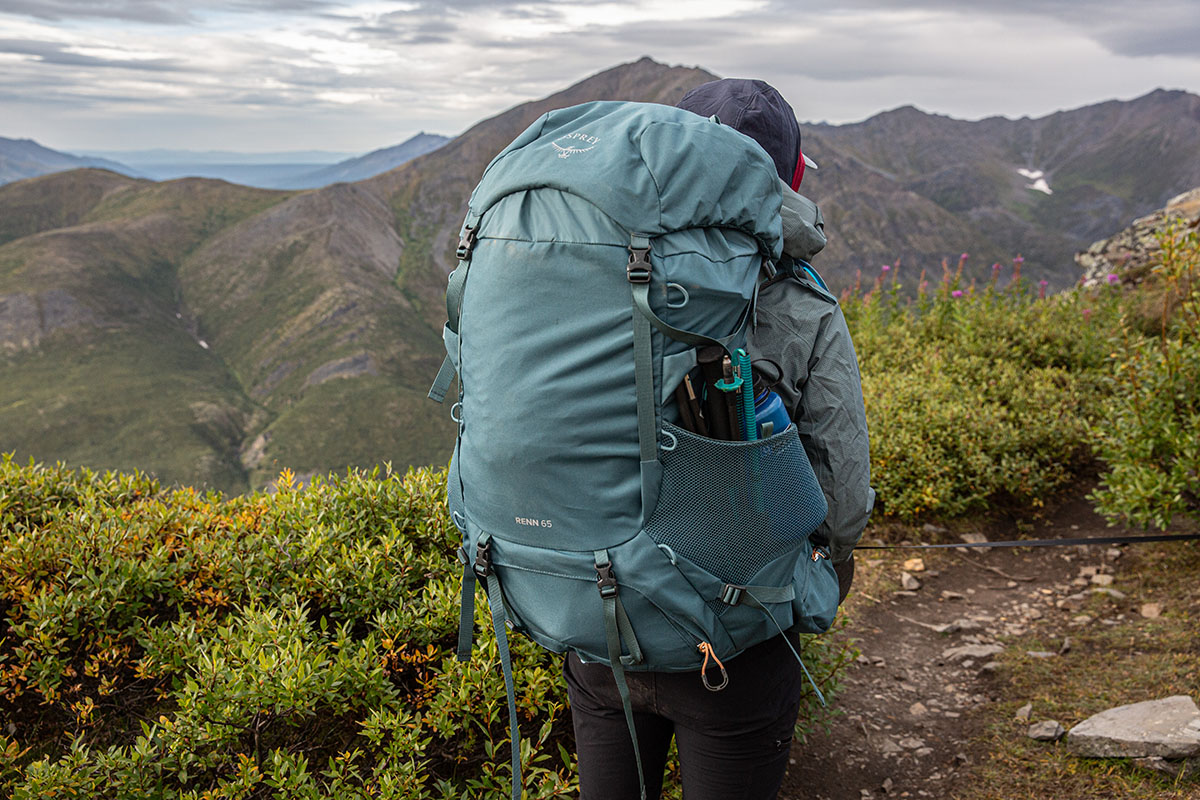
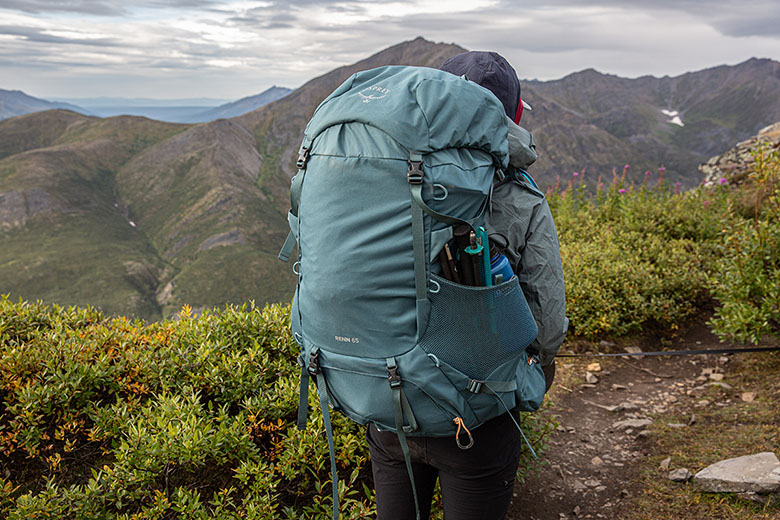
Price: $190
Weight: 3 lb. 6.4 oz.
Capacities: 50, 65L
What we like: Osprey’s signature comfort and support in an affordable package.
What we don’t: Only offered in one size and relatively basic feature set.
See the Osprey Renn 65 See the Men's Osprey Rook 65
Osprey is one of the most well-known pack manufacturers with an extensive lineup to match, from ultralight models for weight-conscious minimalists to feature-rich heavy haulers that make few concessions. The women’s-specific Renn (and men’s Rook) slots in as their entry-level design. Offered in 50- and 65-liter capacities, I recently brought the larger model to Canada’s Yukon Territory for testing, putting it through its paces on a four-day trek in the rugged and remote Tombstone mountains. In sum, the pack carried a full load extremely well and kept me comfortable in hot temperatures, but Osprey did make some notable sacrifices to keep costs low. Below I break down my experiences with the Renn 65. To see how it stacks up in the market, check out our article on the best women’s backpacking packs.
Osprey is known for their comfort-first ethos, and the Renn 65 carries the torch. The shoulder straps and hipbelt are nicely cushioned—enough so that I experienced no pressure points despite exceeding the recommended 40-pound limit—and distribute a full load well. Additionally, the compressions traps did a great job locking things down and minimizing sway, even when navigating tricky terrain like boulder fields and creek crossings, and the torso adjustment system allowed me to dial in a snug and supportive fit. Finally, while the lumbar and backpanel aren’t particularly plush, they’re comfortable enough that they largely went unnoticed while backpacking. Plus, the suspended mesh design does a great job encouraging airflow (more in “Ventilation” below). All in all, for the price, the Renn handily exceeded my expectations in terms of comfort.

At 3 pounds 6.4 ounces on my scale (listed weight is a bit higher at 3 lb. 9.6 oz.), the Renn 65 strikes a nice middle ground between streamlined ultralight models and feature-rich heavy haulers. Within Osprey’s lineup, it’s considerably lighter than their no-holds-barred Ariel 65 (4 lb. 13.6 oz. in a size XS/S) while also slightly undercutting the well-rounded Aura AG LT 65 (3 lb. 13.4 oz.) and similarly basic Viva 65 (4 lb. even). In fact, only their ultralight Eja 58 is lighter, checking in at just 2 pounds 11.5 ounces. And importantly, the Renn is similarly competitive when stacked up against non-Osprey models, including REI’s also budget-friendly Trailmade 60 (3 lb. 4 oz.) and Gregory’s Jade 63 (4 lb. 4 oz.). Overall, I came away with zero complaints regarding the Renn’s heft and think Osprey did a great job balancing weight, comfort, and price.
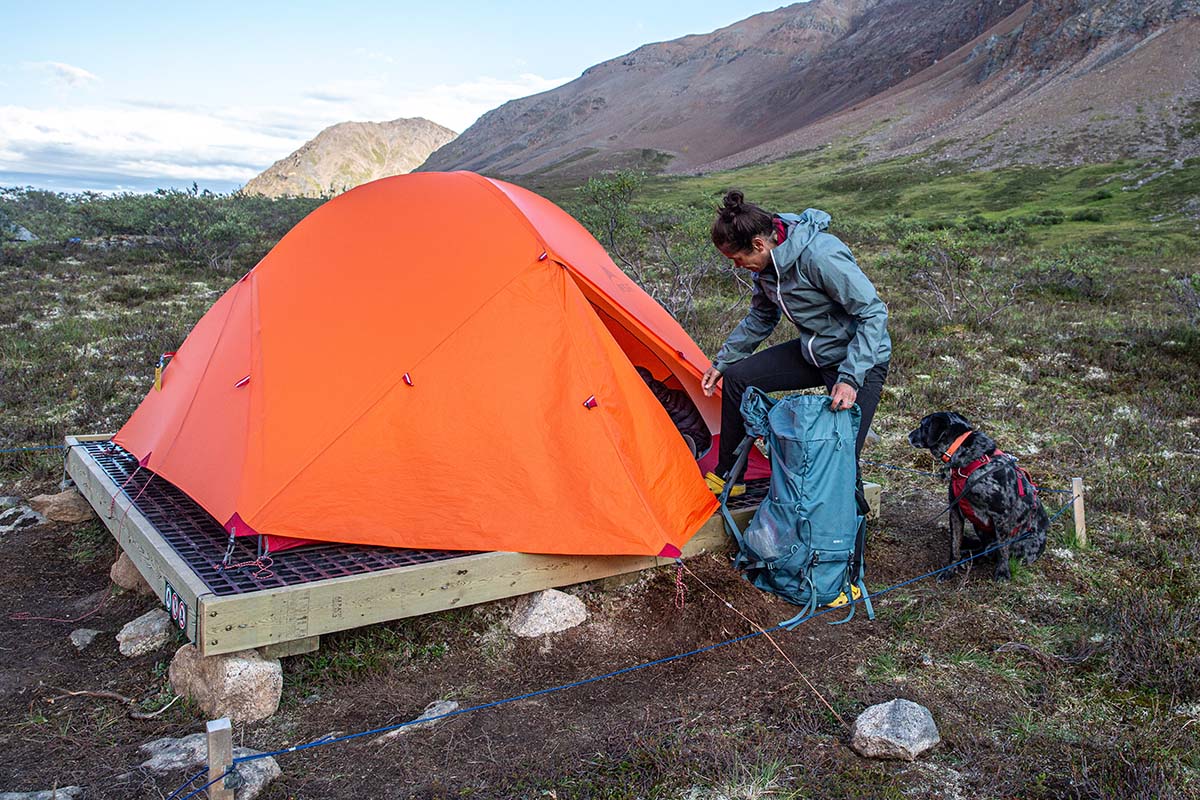
Pockets
Organization is one area where Osprey made some sacrifices to keep costs low. Starting with storage, you get a total of five usable pockets: one zippered stash on the lid, two mesh side pockets, and two zippered hipbelt pockets. The lid pocket includes a clip inside for attaching keys or an Apple AirTag, and the side pockets were large and stretchy enough to accommodate a 32-ounce Nalgene bottle plus trekking poles, bear spray, and an extra layer or two as temperatures shifted throughout the day. These latter pockets also feature two access points (one on top and one on the side), although I found it difficult to reach in vertically without taking the pack off. Moving onto the hipbelt, both pockets are generously sized and made it easy to stash my Garmin inReach and iPhone 11 in one and dog treats in the other. As I mentioned above, there’s also a zippered stash for the rain cover at the bottom of the pack, but I don’t consider it usable space since I never remove the cover.
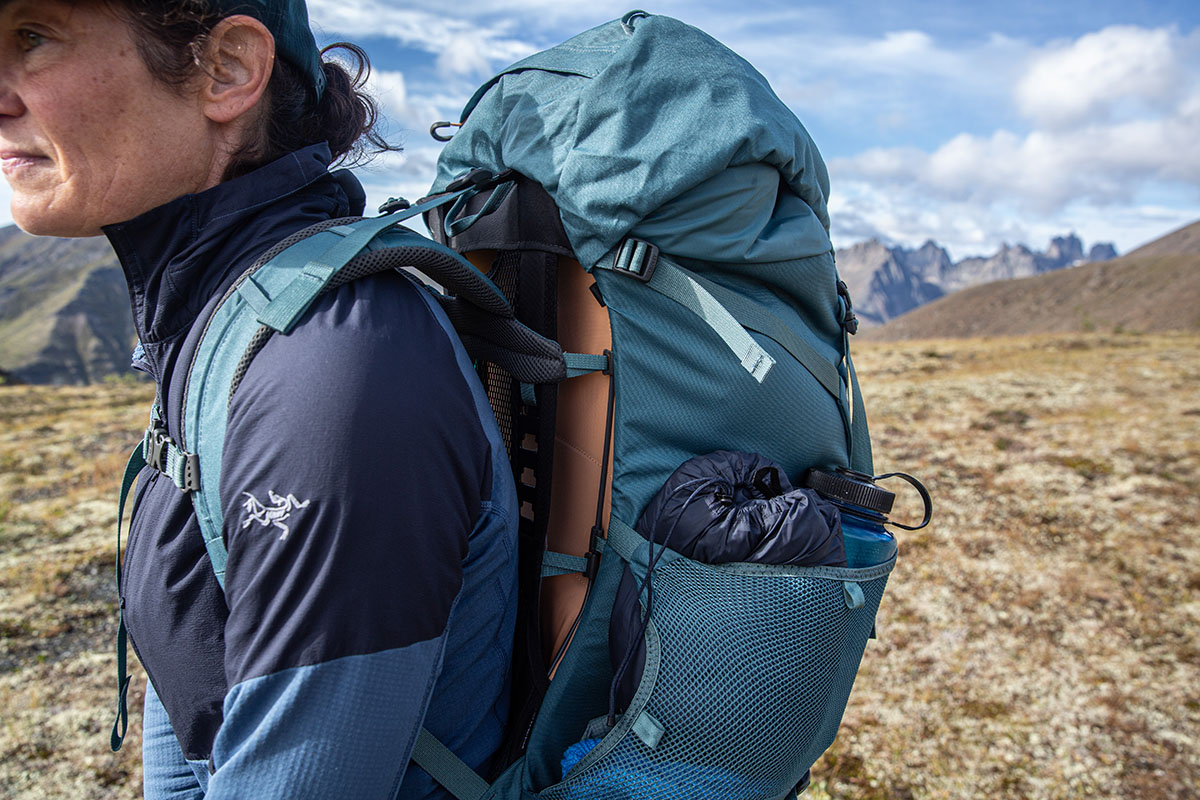
Access
In terms of access, the Osprey Renn 65 is a top-loading pack with a cinchable drawstring closure. While fairly standard, I strongly prefer multiple access points to the main compartment, as they make it much easier to find and retrieve buried gear without having to awkwardly dig and rifle through all of your belongings. On our Yukon trip, I found the process especially difficult with our bear canister taking up most of my pack, requiring me to drop the canister in from above before stuffing other items around it. No matter how carefully I packed, there was always some extra space, causing the pack to look a bit lumpy and unwieldy.
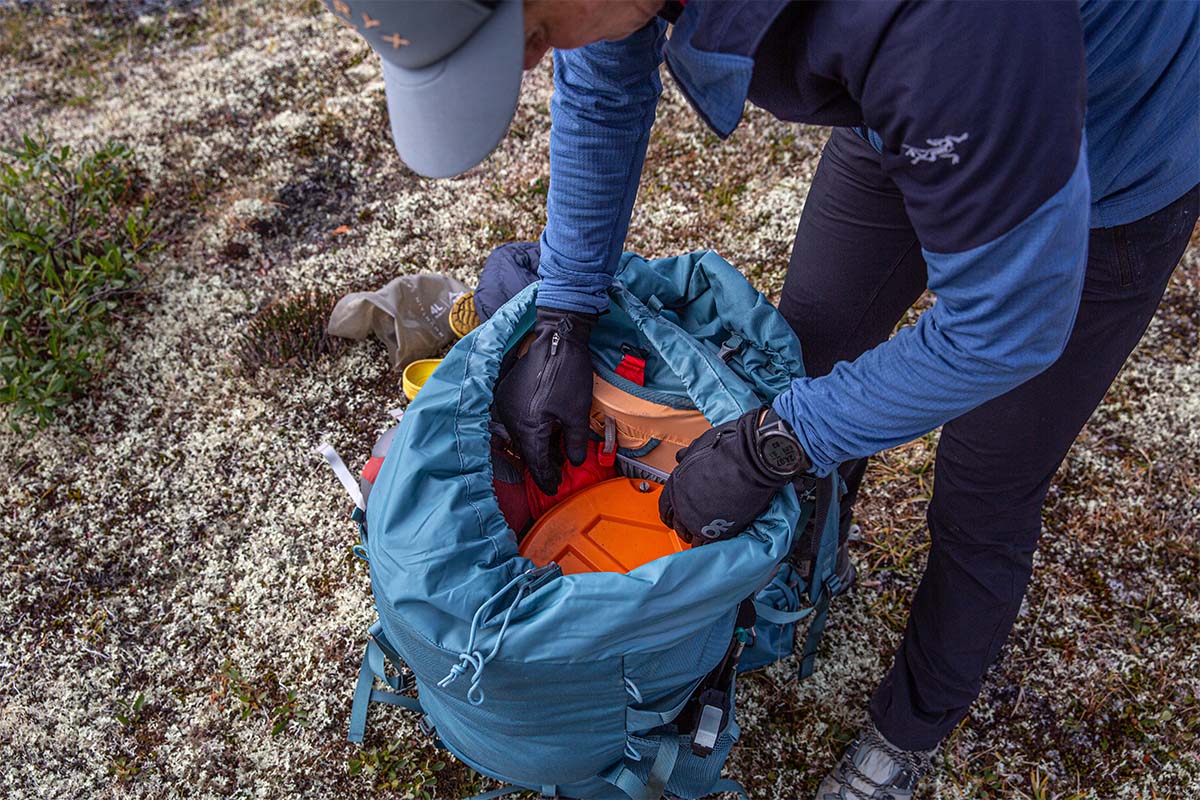
Other Features
Like most other backpacking packs, the Renn includes a hydration sleeve inside the main compartment with a clip for hanging a bladder and an exit port for the hose. As I mentioned above, there’s also a dedicated sleeping bag compartment at the bottom of the pack with a removable divider, which I usually opt to leave out to make more room for clothing and other gear. On the outside, there are ample lash points and straps for securing extra gear and compressing a full load, removable sleeping pad straps (which I often used for trash or wet items to keep them separate), and anchor loops for securing Osprey’s Daylite daypack (sold separately for $65).

While not the most ventilated option in Osprey’s lineup—that title goes to their AntiGravity designs denoted by “AG” in the name—the Renn 65 is no slouch. Our early-August trip to the Yukon was decidedly hot and exposed in areas, but the pack’s AirSpeed backpanel did a great job keeping me comfortable. The suspended mesh effectively created a gap between the pack and my body for air to flow between, leading to no sweat buildup—even during strenuous ascents over grueling mountain passes. Again, you can get better breathability with an alternative like Osprey’s own Aura AG or trimmed-down Aura AG LT, but the Renn isn’t far behind and will save you considerable cash.
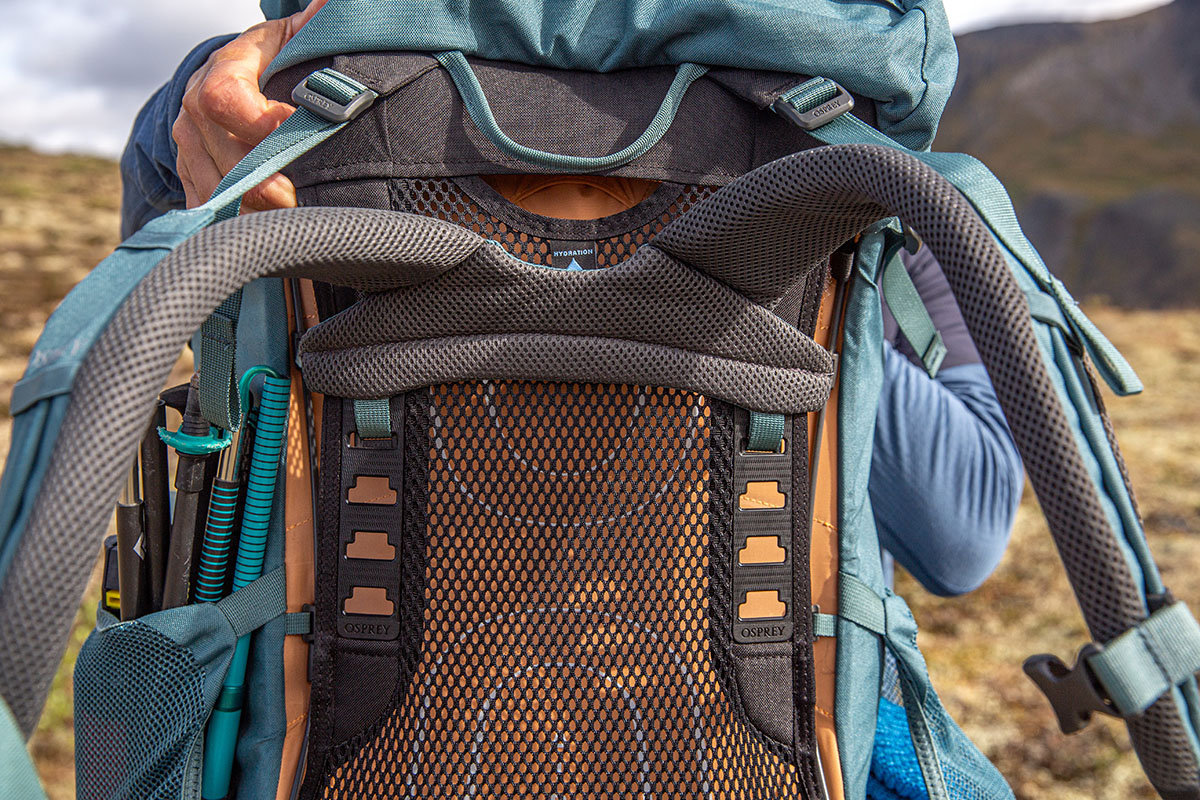
The Renn comes with an integrated rain cover that stashes away in a dedicated pocket at the base, which I was very happy to have during a thunderstorm on our first day. As usual, I waited until my pack was already wet before stopping to remove and don the cover, as I expected the rain to pass quickly and didn’t want to interrupt our flow while hiking (plus, my husband was using a waterproof Hyperlite pack, so he didn’t need to stop). Despite my delayed response to the onslaught, everything in my pack remained dry—even my Garmin inReach and iPhone that I had stored in the hipbelt pockets. I wouldn’t advise relying on the pack’s fabrics to fend off heavy or extended moisture, but I was happy to have a bit of wiggle room to don the rain cover. Once I put it on, the cover allowed me to continue onto camp without having to worry about sensitive gear like my sleeping bag and down jacket getting wet.
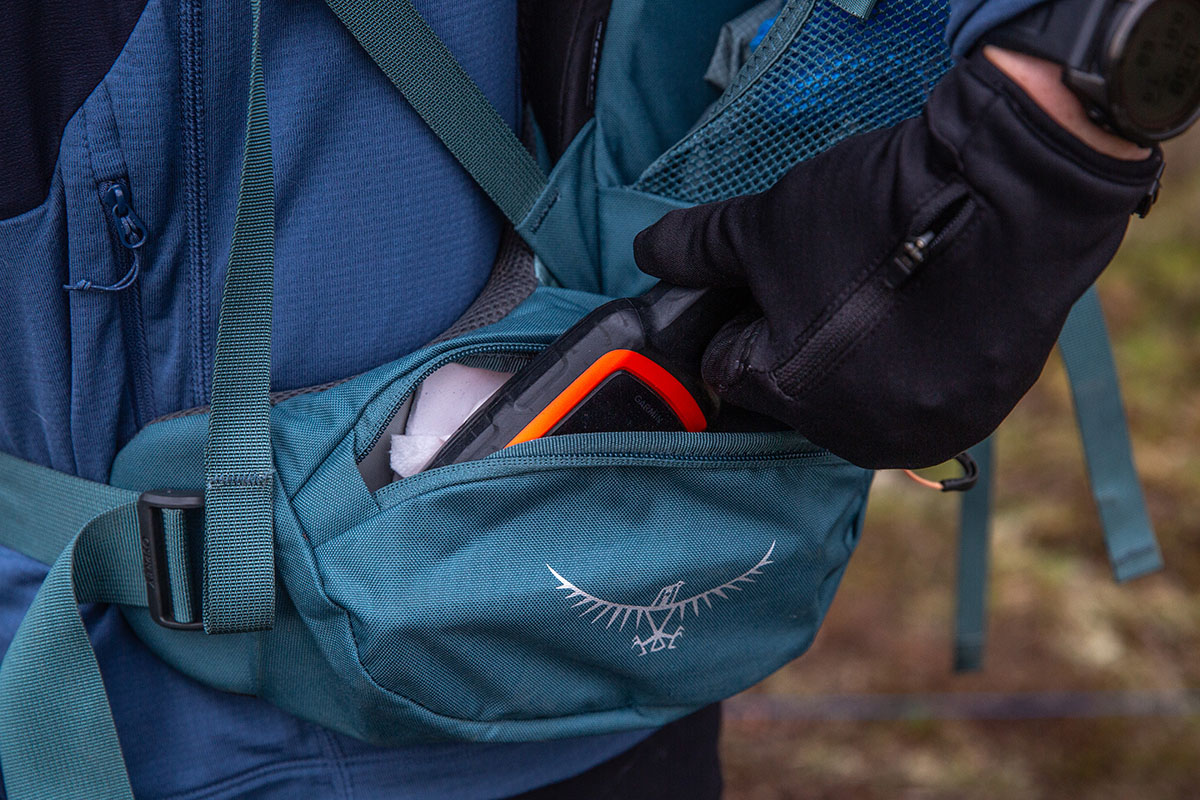
Osprey has been in the pack-making game for five decades, so it’s no surprise they have the durability part of the equation down pat. In this case, the Renn 65 uses thick, 600-denier (D) polyester along both the body and base, which has held up incredibly well to rough use throughout testing. For reference, the pack has been tossed on rocks and dragged through thick brush (many hikes in the Yukon start in scrubby birch and poplar) with virtually no signs of wear to show for it. All the smaller components are holding up equally well, from the smooth-operating zippers to the trustworthy straps and buckles. Given my positive experiences thus far, I expect the Renn to have a very long and healthy lifespan.
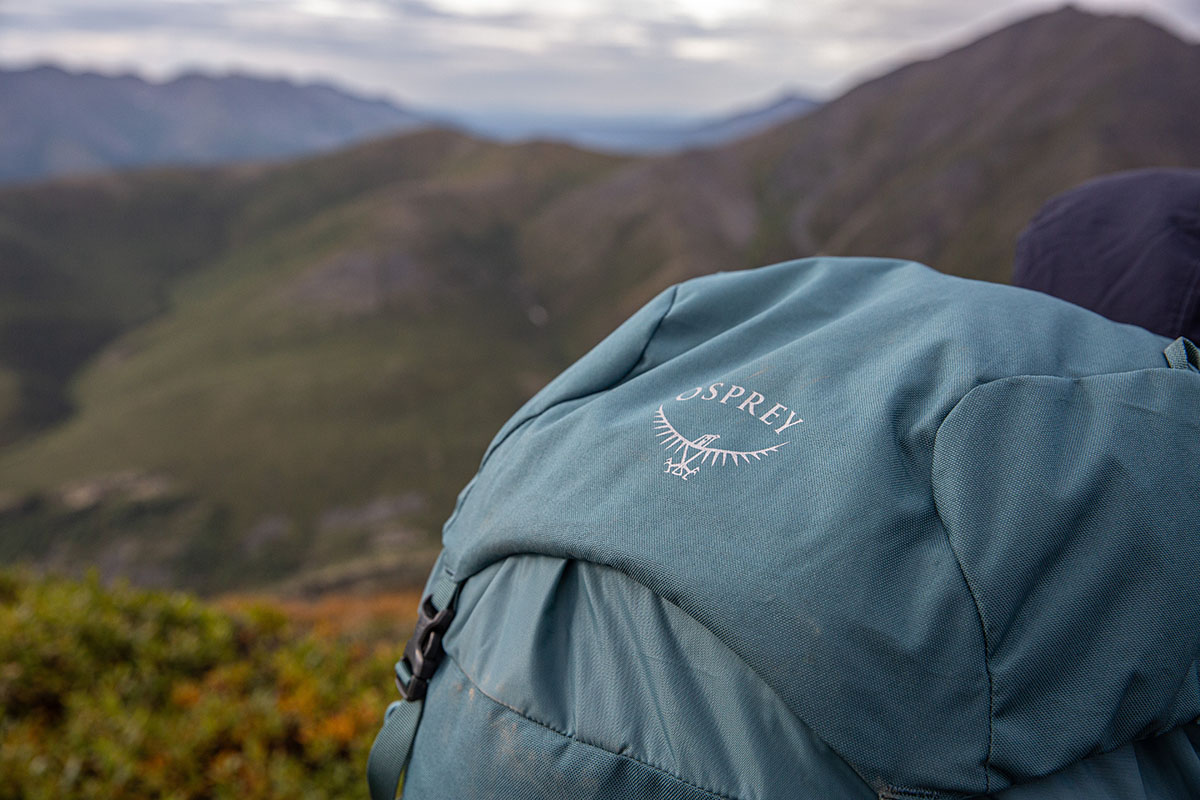
The Renn only comes in one size, which won’t work for everyone. On the bright side, the pack includes an intuitive ladder system for tweaking the length of the torso, with can be adjusted by up to 4 inches. Once I dialed that in, I was happy to find the pack fit my narrow, 5’8” frame perfectly. It’s worth noting that the hipbelt is fixed in place, unlike what you get with Osprey’s Aura and Ariel packs, but can accommodate hips between 26 and 48 inches, which is a decently wide range. To help bridge the gap, Osprey also offers an Extended Fit variation of the Renn 65, which boasts a wider hipbelt that can fit hips up to 70 inches, along with extended shoulder straps, repositioned pockets, and a longer sternum strap.
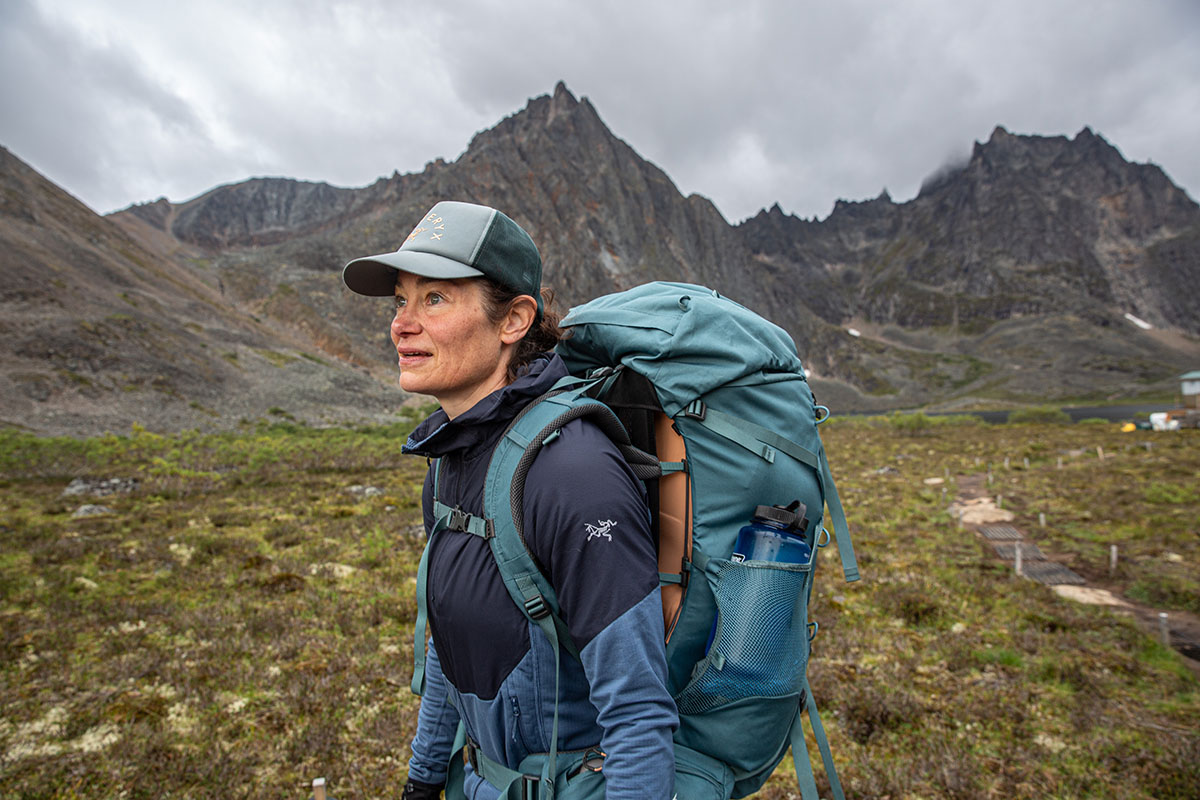
Our impact on the environment has never been of greater concern, so we appreciate when brands take steps to reduce their overall footprint. Osprey has been a consistent leader in this realm, and the Renn 65 is a nice example. Specifically, the pack’s body and bottom are made from 100%-recycled polyester, while the lining is 100%-recycled nylon. All are treated with a PFAS-free DWR finish—for reference, PFAS are known as “forever chemicals” due to their inability to break down over time, and several states are working to ban these per- and polyfluoroalkyl substances entirely. The Renn’s fabrics are also bluesign-approved, indicating that they’ve been deemed safe for workers, consumers, and the environment. Taken together, it’s another win on the sustainability front from Osprey.
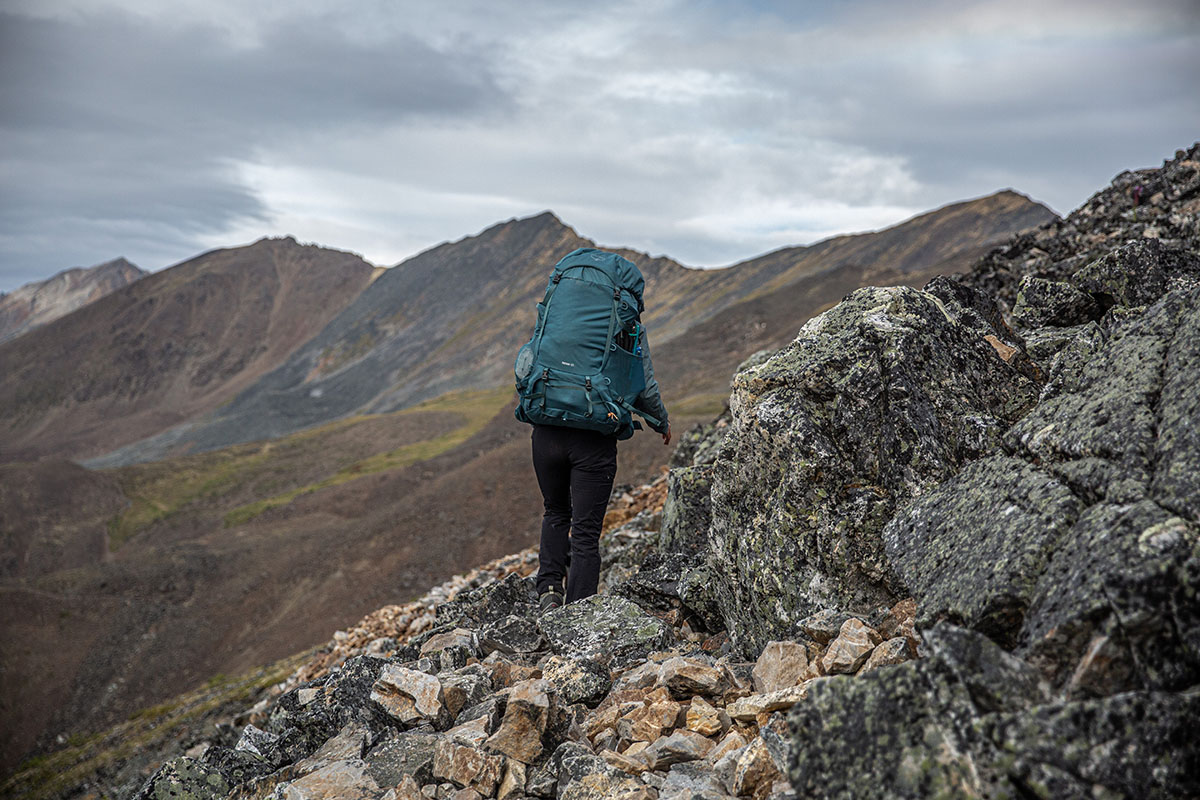
We tested the 65-liter Renn for this review, and it’s also sold in a smaller 50-liter capacity for $10 less. The two packs are nearly identical apart from differences in capacity and weight, with the Renn 50 clocking in at 3 pounds 8 ounces. As I touched on above, Osprey also offers the 65-liter Renn in an Extended Fit variation with an extended hipbelt and shoulder straps, repositioned pockets, and a longer sternum strap (the 50L model does not come in extended sizing). On the men’s side, the Rook is the Renn’s counterpart and boasts a largely identical design and feature set. Like the women’s collection, the Rook line includes 50- and 65-liter capacities, along with an Extended Fit version of the latter.
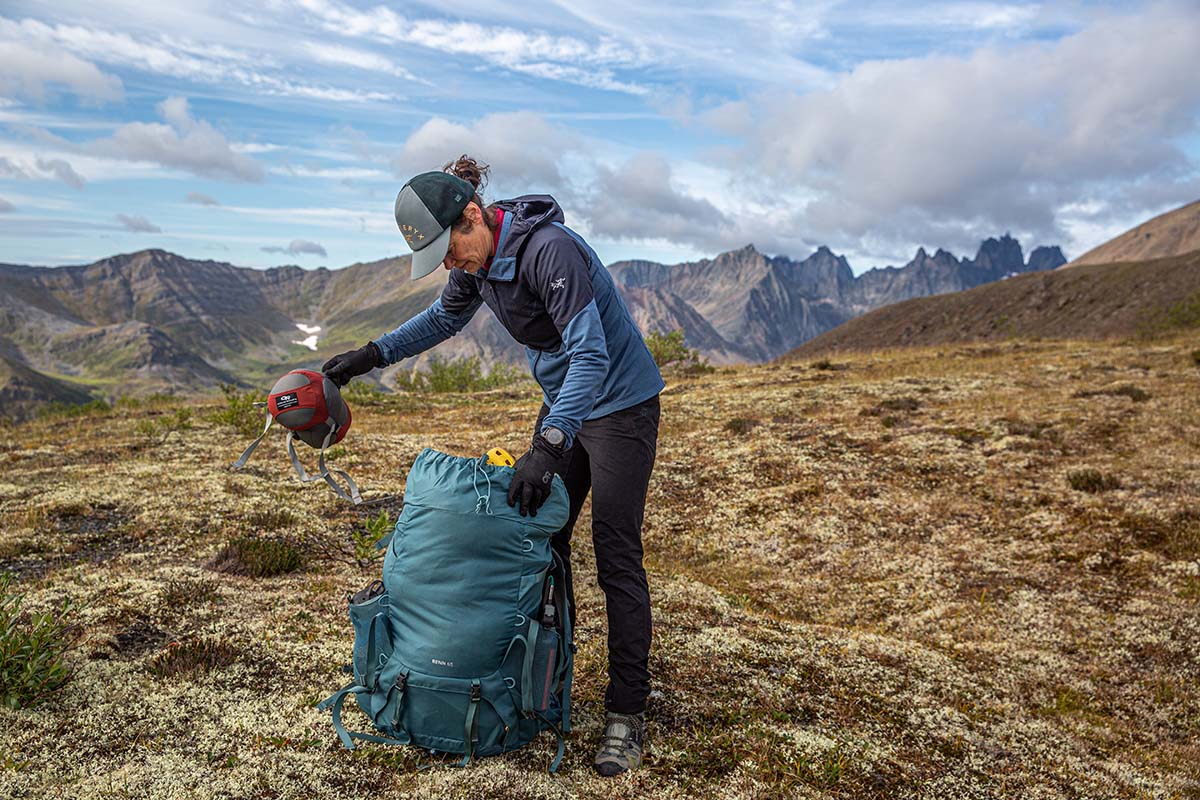
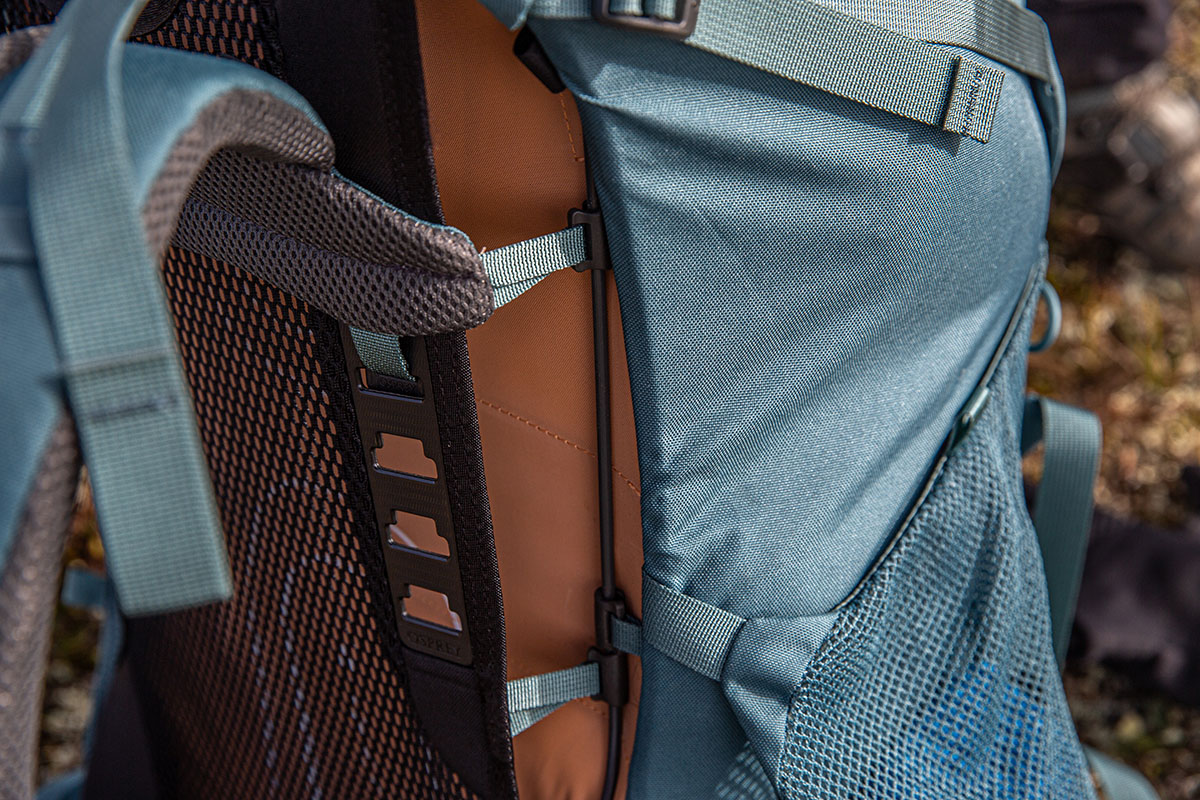
| Pack | Price | Weight | Fabric | Capacities | Access | Pockets |
|---|---|---|---|---|---|---|
| Osprey Renn 65 | $190 | 3 lb. 9.6 oz. | Polyester (600D) | 50, 65L | Top | 5 exterior |
| Osprey Viva 65 | $220 | 4 lb. 0 oz. | Polyester (600D) | 45, 65L | Top, front | 5 exterior |
| Osprey Aura AG LT 65 | $290 | 3 lb. 13.4 oz. | Nylon (210D & 500D) | 50, 65L | Top, front | 6 exterior |
| Gregory Amber 68 | $240 | 3 lb. 8.0 oz. | Nylon (210D & 420D) | 34, 44, 54, 68L | Top | 6 exterior |
| REI Co-op Flash 55 | $199 | 2 lb. 11.0 oz. | Nylon (100D & 210D) | 55L | Top | 9 exterior |
The Renn 65 is Osprey’s entry-level women’s backpacking pack and very well rounded for the price, but those who prioritize easy on-the-go organization may want to look elsewhere. For $30 more, Osprey’s Viva 65 tacks on secondary access to the main compartment via a large, J-shaped zipper at the front, which makes it much easier to find and retrieve gear at the bottom of the pack. The Viva doesn’t include a sleeping bag compartment like the Renn, although that won’t be a dealbreaker for most. What could be a dealbreaker, however, is the lack of front shove-it pocket, which both the Renn and Viva omit. It’s up to you whether or not dual access to the main compartment is worth the price increase, but we personally feel the Renn is the better overall value.
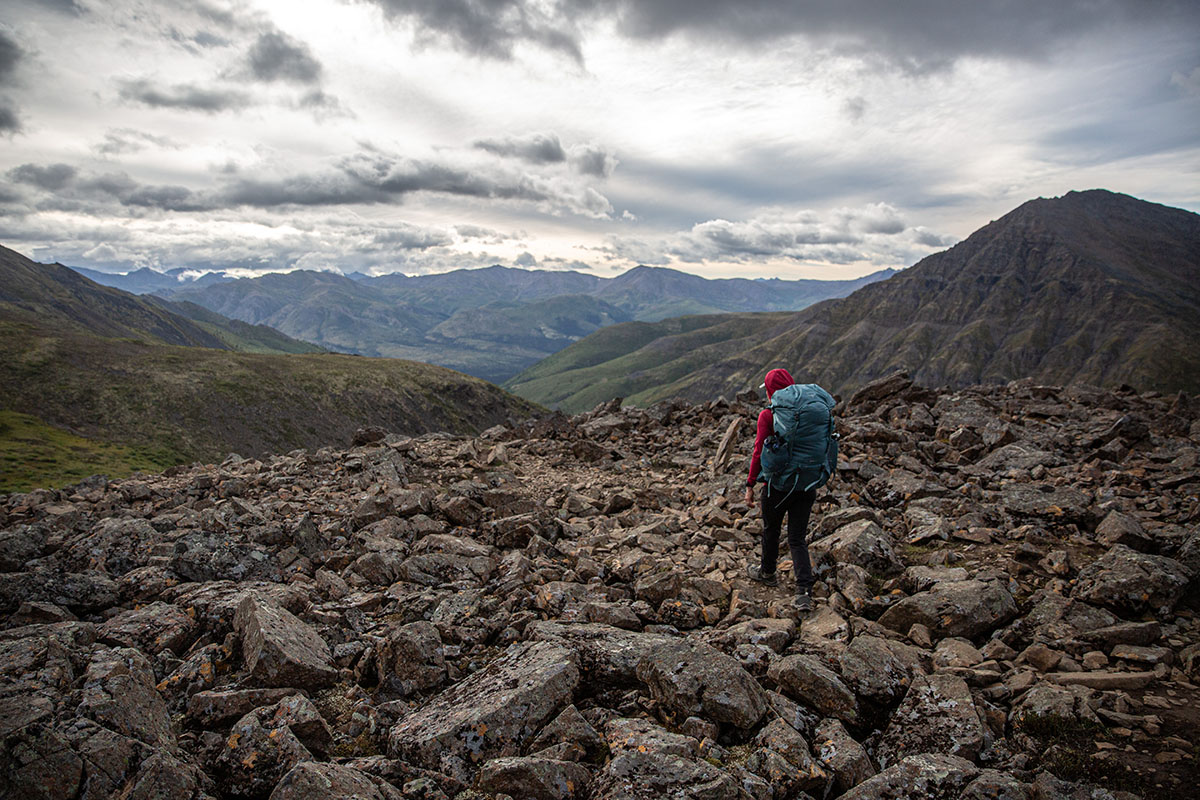
Our favorite women’s pack this year is another Osprey design: their Aura AG LT 65. Right away, we’ll note that the Aura is a much steeper investment than the Renn at $290, but committed backpackers will almost certainly find the upgrades worth it. Highlights include Osprey’s AntiGravity backpanel that offers best-in-class ventilation, a rip-and-stick Velcro system for fine-tuning both the torso length and hipbelt, a front mesh pocket for quickly securing extra layers, and a curved zipper for improved access to the main compartment (for more, see our in-depth Aura AG LT review). The Renn is the more durable option with thicker fabrics and checks in a little lighter, but we consider the Aura AG LT to be the most well-balanced design currently on the market.
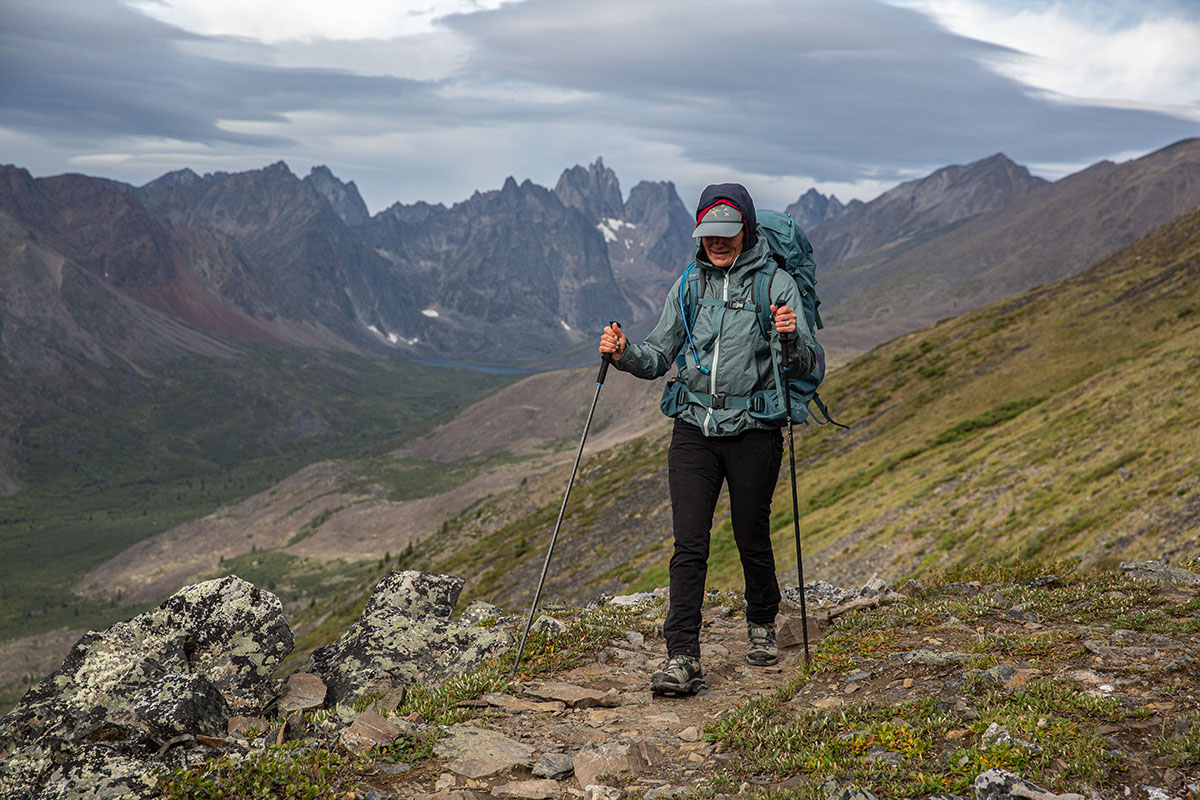
Moving away from Osprey’s lineup, Gregory’s Amber 68 splits the difference between the Renn and Aura AG LT covered above at $240. Compared to the Renn, the pricier Amber makes far fewer compromises: It’s similarly comfortable and capable under heavy loads (with a higher max carry of 50 lb.), features a floating top lid and mesh shove-it pocket for improved organization, and stacks up similarly in weight (3 lb. 8 oz.). The Amber also tacks on a Velcro adjustment system for fine-tuning the fit of the hipbelt, along with additional padding at the back and lumbar. Like the Renn, the Gregory omits a zipper at the front for accessing the main compartment, but most should still find the Amber’s upgrades worth the $50 price increase.
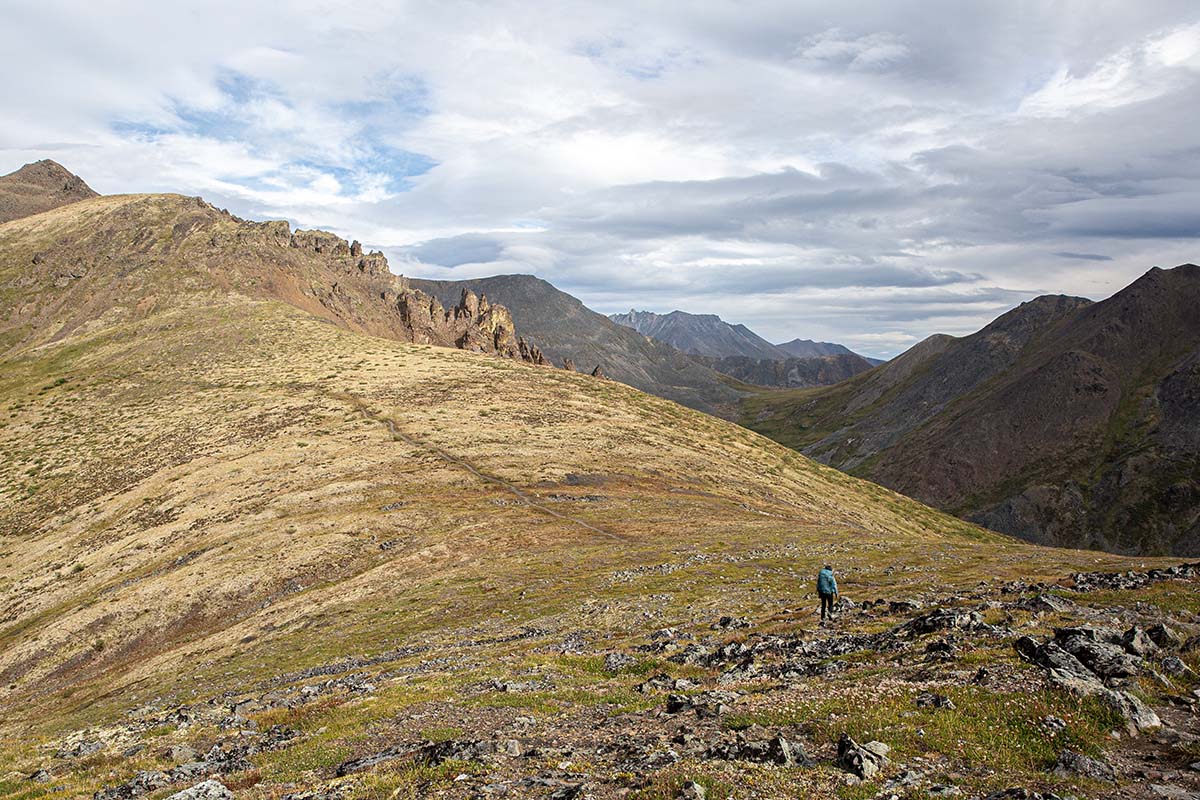
Last but not least, REI Co-op is a consistent leader in the budget market, and their $199 Flash 55 has a lot going for it. While 10 liters smaller than the Renn, the Flash is competitively light at 2 pounds 11 ounces in a size small and handily wins out in organization with four large side pockets (great for longer items like tent poles and a tall water bottle), a generous front dump pocket, and a range of customizable features that are easy to remove and reattach, including compression straps, two hipbelt pockets, and a shoulder strap pocket. We also appreciate that it’s available in four sizes, including a unique extra-small torso with a medium hipbelt. On the flip side, the Renn provides better ventilation and comfort under heavy loads (the REI has a limit of just 30 lb.), and the Flash’s fabrics are both thinner and cheaper-feeling. We still consider the REI to be the better overall design, especially for weight-conscious backpackers, but the Renn is the more approachable option for those just starting out.